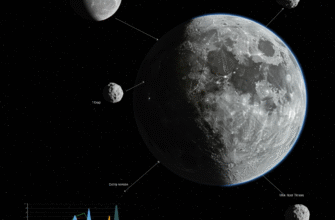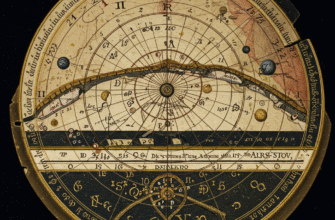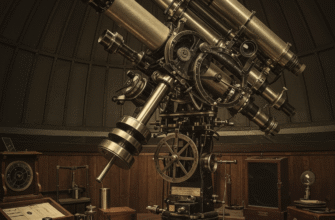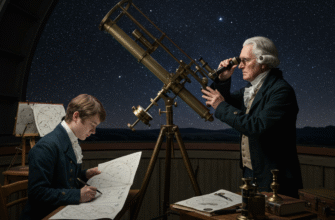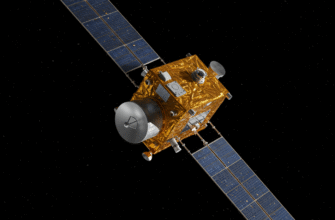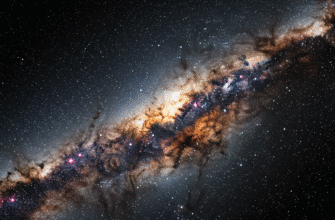For millennia, the sudden, daytime plunge into twilight during a total solar eclipse was an event of awe, perhaps even terror. But for a determined few, these fleeting moments when the Moon perfectly obscured the Sun offered an unparalleled scientific opportunity. The faint, ethereal glow of the solar corona, otherwise lost in the Sun’s glare, became visible. It was these “eclipse chasers,” individuals and teams who journeyed across continents and oceans, often facing challenging conditions, who painstakingly pieced together our earliest and most fundamental understanding of this enigmatic outer solar atmosphere.
Early Glimpses and Lingering Questions
Before the advent of photography, observations of the corona were entirely reliant on the human eye and the artist’s hand. Descriptions varied wildly, reflecting the subjective nature of such fleeting views. Some saw pearly white petals, others stark rays, and the true nature of this ghostly halo was hotly debated. Was it an atmospheric phenomenon of Earth? A feature of the Moon? Or, most intriguingly, did it belong to the Sun itself?
Early records, like those potentially from Plutarch or Kepler, hinted at this outer light. But it was during the more scientifically documented eclipses of the 18th and early 19th centuries that the solar origin theory began to gain traction. Astronomers like José Joaquín de Ferrer, observing the 1806 eclipse in Kinderhook, New York, strongly argued that the corona was too extensive to be a lunar atmosphere and must be associated with the Sun. Yet, definitive proof was elusive, and the corona remained largely a beautiful mystery, a tantalizing spectacle visible for mere minutes every few years to those fortunate enough to be in the path of totality.
The Photographic Revolution
The mid-19th century brought a technological game-changer: photography. Suddenly, the ephemeral corona could be captured, studied at leisure, and compared across different eclipses and observers. The 1851 total solar eclipse, visible across northern Europe, is often cited as a pivotal moment. Berkowski, a local daguerreotypist in Königsberg, Prussia (now Kaliningrad, Russia), under the direction of the observatory director August Ludwig Busch, captured the first correctly exposed image of the solar corona. This daguerreotype, though primitive by modern standards, was a monumental step.
More sophisticated photographic efforts followed. Warren De La Rue, a British astronomer and chemist, famously transported his powerful Kew Photoheliograph to Rivabellosa, Spain, for the 1860 eclipse. His images, along with those taken by Father Angelo Secchi in Desierto de las Palmas, Spain, provided compelling evidence. By comparing photographs taken from different locations, they demonstrated that features in the corona, such as prominences (then sometimes confused with coronal structures), appeared to rotate with the Sun and were not optical illusions or lunar artifacts. This definitively established the corona as a solar appendage.
Unveiling Secrets with Spectroscopy
With the corona confirmed as part of the Sun, the next great quest was to understand its physical nature. What was it made of? Why did it shine? The tool for this job was the spectroscope, which could break down light into its constituent colors, revealing the chemical elements present in the light source. Eclipse expeditions in the latter half of the 19th century became spectroscopic missions.
During the eclipse of August 18, 1868, observed from India, French astronomer Pierre Janssen detected a bright yellow spectral line in the light of solar prominences, which he initially attributed to sodium. However, he quickly realized it was a new line, and independently, English astronomer Norman Lockyer, who had developed a method to observe prominences outside of an eclipse, also identified this line. They concluded it represented a new element, unknown on Earth, which Lockyer named “helium” (from Helios, the Greek word for Sun). While this was a discovery about prominences, it showcased the power of eclipse spectroscopy.
A year later, during the American eclipse of August 7, 1869, Charles Augustus Young and William Harkness independently observed a mysterious bright green spectral line in the corona itself. This line didn’t match any known terrestrial element. The prevailing hypothesis was that it belonged to yet another new element, dubbed “coronium.” For decades, the hunt for coronium on Earth proved fruitless, and its nature remained one of solar physics’ biggest puzzles. These spectroscopic observations, made under the intense pressure of rapidly fading totality, were triumphs of scientific dedication.
For centuries, total solar eclipses provided the only window into the Sun’s mysterious outer atmosphere, the corona. The dedicated efforts of eclipse chasers, often traveling to remote corners of the globe, were instrumental in transforming our understanding of this superheated plasma. Their meticulous observations, from naked-eye sketches to sophisticated photographic and spectroscopic studies, laid the entire foundation for modern solar physics. Without these fleeting glimpses during totality, the corona’s existence, let alone its extreme nature, would have remained unknown for much longer.
The Corona’s Changing Face and Extreme Heat
As eclipse chasing matured into the early 20th century, expeditions became more elaborate, often sponsored by major observatories. Teams like those from Lick Observatory in California became renowned for their systematic photographic campaigns, traveling to far-flung locations from Australia to Chile. These repeat observations, year after year, eclipse after eclipse, began to reveal a crucial pattern: the shape of the corona changed in sync with the 11-year solar activity cycle. During solar maximum, the corona appeared more symmetric and ray-like, extending outwards in all directions. During solar minimum, it was more concentrated at the Sun’s equator, with prominent polar plumes or brushes.
This connection between the visible structure of the corona and the underlying solar magnetic activity was a profound insight, gleaned entirely from the brief views afforded by totality. It hinted that the corona was not a static atmosphere but a dynamic, magnetically sculpted plasma.
The mystery of coronium, however, persisted until the late 1930s and early 1940s. It wasn’t a new element after all. Building on theoretical work, Walter Grotrian in 1939 and, more definitively, Bengt Edlén in 1941, showed that the green “coronium” line, and other mysterious coronal lines, were actually produced by known elements—specifically, highly ionized atoms like iron that had been stripped of many electrons (e.g., Fe XIV, or iron that had lost 13 electrons). For atoms to reach such extreme states of ionization, the coronal gas had to be incredibly hot, millions of degrees Celsius. This was a shocking revelation, as the Sun’s visible surface is “only” about 5,500 degrees Celsius. The corona was, unexpectedly, vastly hotter than the photosphere below it.
Laying the Groundwork for Modern Solar Physics
The knowledge painstakingly gathered by generations of eclipse chasers formed the bedrock upon which modern solar physics was built. Their photographs detailed its structure, their spectroscopic readings hinted at its composition and unbelievable temperatures, and their persistence linked its form to the solar cycle. Before the era of space-based coronagraphs, which can create artificial eclipses at will, every single piece of information about the detailed structure and composition of the corona came from those precious, hurried minutes of totality.
These intrepid observers, from lone astronomers with portable telescopes to large, well-equipped expeditions, faced logistical nightmares, unpredictable weather, and the sheer brevity of the phenomenon they traveled so far to see. Yet, their collective efforts transformed the corona from a fleeting visual spectacle into a complex, dynamic, and superheated region of the Sun, setting the stage for the ongoing quest to understand its mysteries, like the coronal heating problem and the origin of the solar wind. The legacy of the historical eclipse chaser is a testament to human curiosity and the relentless pursuit of knowledge, even when it’s visible only in the Moon’s shadow.


